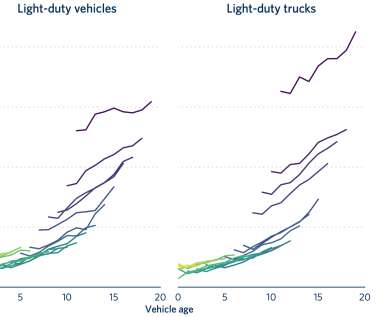Actual fuel economy of cars and light trucks: 1966-2019
Green Car Congress
JANUARY 7, 2021
However, the starting year of this analysis is 1966 because (1) for 1923 through 1935, fuel-economy information is available only for the entire fleet of all vehicles, and (2) from 1936 through 1965, light trucks were included with other trucks in the relevant statistics.?. No change between 1991 and 2004 (19.6 of the entire fleet of.8
































Let's personalize your content